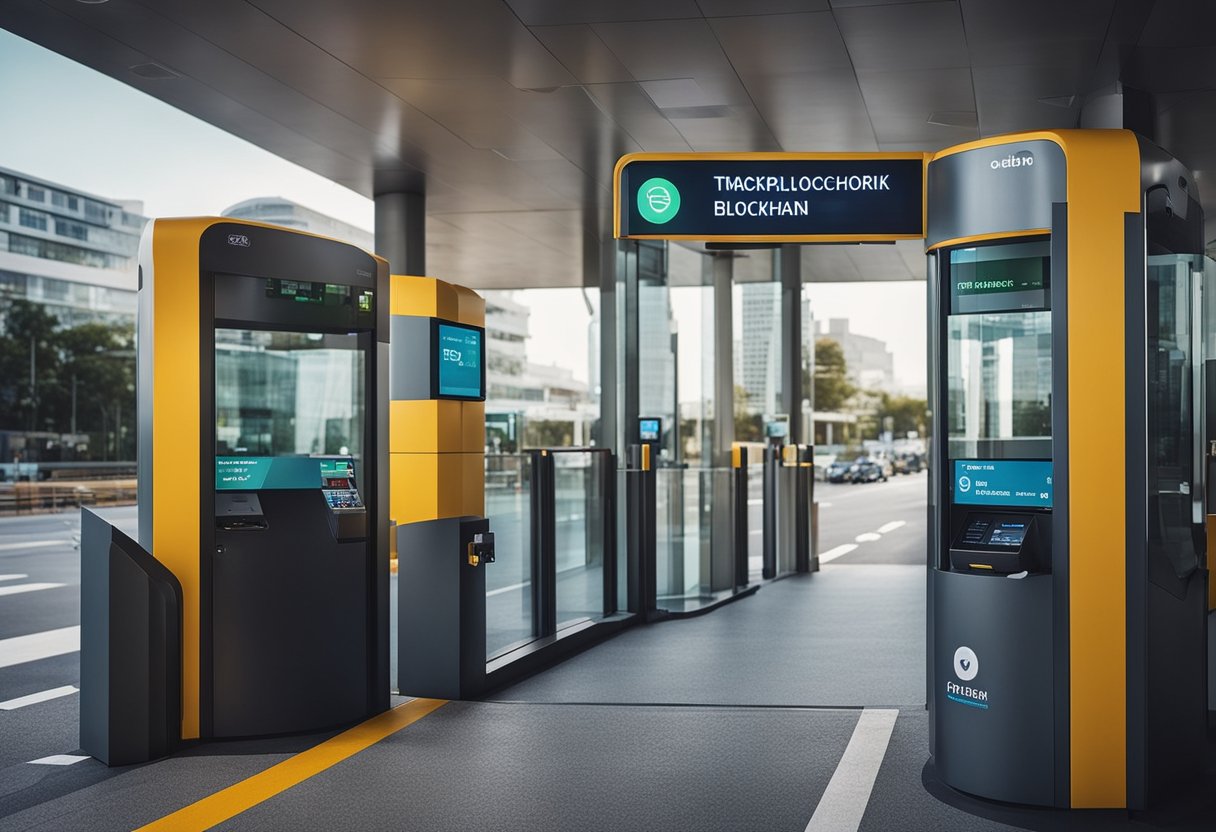Blockchain in Tolling
Toll collection systems are integral to infrastructure financing, maintenance, and traffic management. As technology advances, blockchain is emerging as a potential solution to enhance the efficiency and security of these systems. The implementation of blockchain technology in tolling can transform how transactions are processed and data is managed. Handling payments and sensitive information through a decentralized ledger not only strengthens security against fraud but also promises transparency and reliability, ensuring that the right fee is charged and paid securely.
Integrating blockchain within toll operations paves the way for a more streamlined approach to toll collection. The autonomous execution of smart contracts on a blockchain framework can lead to a reduced need for intermediaries, cutting down operational costs while improving accuracy in toll transactions. Privacy-preserving mechanisms ensure the safety of user data, and real-time updates facilitate prompt and accurate billing. This trustless system could represent the future of road-user charging, leveraging blockchain’s inherent qualities to address challenges concerning data management and security.
Key Takeaways
BLOCKCHAIN ENHANCES THE SECURITY AND EFFICIENCY OF TOLL COLLECTION SYSTEMS.
AUTOMATED SMART CONTRACTS ON BLOCKCHAIN MINIMIZE THE NEED FOR INTERMEDIARIES.
BLOCKCHAIN TECHNOLOGY ENSURES REAL-TIME, TRANSPARENT, AND ACCURATE TOLL TRANSACTIONS.
Fundamentals of Blockchain Technology

In understanding blockchain’s role in tolling systems, it’s crucial to grasp the foundational aspects that make blockchain a transformative technology. These include the basic structure of blockchain, the significance of decentralization, and the functionalities provided by smart contracts and transactions.
Blockchain Basics
A blockchain is a digital ledger that records transactions across many computers so that the records cannot be altered retroactively. Its architecture is designed for security and transparency. Essentially, each block in the chain contains a number of transactions, and every time a new transaction occurs on the blockchain, a record of that transaction is added to every participant’s ledger.
Decentralization in Blockchain
The power of blockchain comes from decentralization, meaning no single entity controls the network. It operates on a peer-to-peer network, where every participant, or node, has a copy of the ledger. Decentralization makes the system less vulnerable to fraud and central points of failure, enhancing its reliability for applications like tolling.
Smart Contracts and Transactions
Blockchain is more than a record-keeping technology due to smart contracts. These are self-executing contracts with the terms directly written into code. Smart contracts allow for transactions and agreements to be automatically executed when conditions are met, increasing efficiency and reducing the need for intermediaries. Transactions in a blockchain are, therefore, not only monetary exchanges but can also include the execution of these automated agreements.
Blockchain Application in Toll Collection

Blockchain technology is reshaping toll collection systems by enhancing transparency, streamlining payments, and reducing fraud. These advanced capabilities contribute to a more efficient and secure tolling infrastructure.
Improving Transparency
Blockchain introduces an unprecedented level of transparency in toll transactions. It ensures that data, once entered into the ledger, is tamper-evident and easily auditable. Every transaction on a blockchain-based tolling platform is documented in real-time, providing stakeholders with a clear and accurate record of all activities.
Streamlining Payments
The integration of blockchain simplifies the payment process, reducing the complexity associated with managing toll accounts and transactions. With a decentralized approach, blockchain technology facilitates instant processing, leading to quicker toll collection without the need for intermediaries.
Fraud Reduction
The security features inherent in blockchain significantly mitigate the risk of fraud. By creating an immutable record of transactions and utilizing consensus mechanisms, it becomes nearly impossible to alter data or engage in fraudulent activities. Blockchain’s robust framework can effectively combat the challenges of double spending and identity theft within toll systems.
Integration Strategies
The integration of blockchain technology into existing tolling infrastructures necessitates a careful balance between innovation and compatibility, taking into account data integrity and meeting the stringent demands of legal and regulatory frameworks.
Interfacing with Existing Toll Systems
For blockchain to effectively augment current toll systems, it’s critical that it seamlessly interfaces with existing technologies. This means ensuring that the blockchain software is able to communicate with legacy tolling infrastructure, such as toll booths and transponder systems. Blockchain simplifies the connection to other systems while maintaining the ability to support the continuous flow of traffic without causing disruptions or requiring extensive hardware overhauls.
Data Management and Security
Blockchain offers a robust solution for data management and enhances security in tolling operations. Each transaction within a blockchain ledger is transparent and tamper-proof, which significantly reduces the risk of fraudulent activities. Agencies must implement protocols to handle and protect large volumes of sensitive data, ensuring that personal information remains secure while allowing for the transparent and immutable record-keeping that blockchain is known for.
Key Elements of Data Security in Blockchain:
- Encryption: The use of advanced cryptographic techniques to protect data in transit and at rest.
- Access Control: Mechanisms to ensure only authorized entities can view or manipulate the data.
- Transparency: A clear audit trail for all transactions, enhancing accountability.
Legal and Regulatory Considerations
Integrating blockchain into toll systems extends beyond the technical aspects and into the domain of legal and regulatory considerations. Stakeholders must navigate the complex landscape of transport and data privacy laws which vary by jurisdiction. It is vital for agencies to work in tandem with legal experts to ensure compliance with all applicable laws, such as data protection regulations and financial reporting standards.
Crucial Legal and Regulatory Factors:
-
Data Privacy: Adherence to laws governing the use and storage of personal information.
- Financial Regulations: Compliance with tax laws and regulations pertaining to financial transactions.
- Standardization: Ensuring that blockchain solutions meet industry-wide standards for interoperability and security.
Advantages of Blockchain in Tolling

Blockchain technology offers transformative advantages for toll collection systems, including reducing expenses, improving user satisfaction, and providing efficient audit mechanisms.
Reduced Operational Costs
Blockchain streamlines toll transactions, significantly lowering operational costs. By using a decentralized ledger, it reduces the need for intermediaries, which in turn decreases transaction fees and renders the tolling process more cost-effective. This technology enables automated toll payments through smart contracts, leading to further savings in labor and administrative costs.
Enhanced User Experience
Blockchain also enhances the user experience by providing a smoother and faster transaction process. Users benefit from the seamless integration of multiple toll systems, allowing for uninterrupted travel and reducing congestion at toll booths. The technology ensures transparency and accuracy, giving users greater trust in the fairness of the tolling system.
Real-Time Auditing
With blockchain, every transaction is recorded on a tamper-proof ledger, making real-time auditing possible. This capability not only prevents fraud but also ensures the integrity of the financial records without the lengthy processes typically associated with traditional auditing methods. Agencies can easily access and verify transactions, leading to improved compliance and financial reporting.
Challenges and Considerations
While blockchain technology promises to revolutionize tolling systems by enhancing transparency and efficiency, there are significant challenges and considerations that must be addressed to realize its full potential.
Implementation Challenges
Successfully integrating blockchain into tolling infrastructures involves overcoming technical complexities and significant initial costs. The transition requires retrofitting existing systems with blockchain’s distributed ledger capabilities which can be resource-intensive. Additionally, the need for industry-wide standardization of protocols remains a challenge, where all stakeholders agree on a single approach to ensure interoperability and functional consistency.
Privacy and Data Concerns
Blockchain’s inherent transparency, while a strength, also raises privacy concerns. Ledger entries are immutable and, if poorly managed, may expose sensitive user data. The design of blockchain systems for tolling must balance the need for public verification of transactions with the essential protection of personal information.
Scalability Issues
Blockchain networks can suffer from scalability issues as they grow. The processing speed for transactions can be slow, due to the consensus mechanisms required to validate entries. High transaction volumes typically found in tolling systems can thus lead to a bottleneck. Finding solutions that allow the ledger to handle a substantial increase in transactions without a loss in performance or security is a crucial step that developers and implementers must consider.
Frequently Asked Questions

Blockchain technology has begun reshaping the tolling industry by offering enhanced efficiency, security, and interoperability across various transportation systems.
Blockchain can significantly reduce transaction processing times, automate toll collection, and minimize congestion at toll plazas, facilitating a smoother traffic flow and reducing the environmental impact of idling vehicles.
Utilizing blockchain for payment processing in transportation can lead to a substantial decrease in processing costs, cut down on fraud, and enhance payment security, while also providing real-time transaction visibility.
Blockchain integration into the transportation industry ranges from managing logistics and supply chain tracking to enabling road-user charging systems that efficiently handle large volumes of data and safeguard information.
Yes, blockchain technology enables secure and efficient cross-border payments in the transportation sector, allowing for seamless international transactions without the need for intermediaries, thereby reducing cost and complexity.
Blockchain enhances security by creating tamper-proof records of all transactions and provides transparency by allowing all stakeholders to verify these transactions without compromising sensitive information.
The widespread adoption of blockchain has the potential to revolutionize future transportation infrastructure by enabling more efficient city planning, advanced vehicular communication systems, and a framework for implementing other innovative technologies such as autonomous vehicles.




